
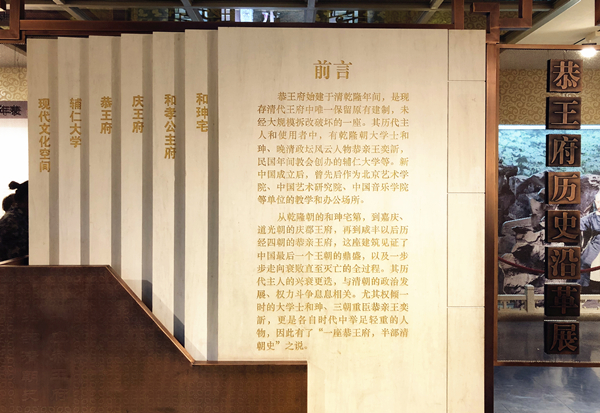
Preface of the exhibition on the history of Prince Kung’s Palace
Location: Main hall of the Baoguang Hall
The exhibition is divided into four parts: “Heshen”, “Yixin - Prince Kung”, “Private Residence and Garden of the Imperial Clan”, and “A Public Cultural Space”. It comprehensively introduces the historical transformation of Prince Kung’s Palace as the former residence of Heshen, Princess Hexiao, Prince Qing, Prince Kung, Fu Jen University, and as a modern cultural space.
Parts of the original ceiling and floor paving of the hall are exposed to visitors, so as to showcase the polychrome decorative paintings on the crossbeams and the original paving of the Baoguang Hall. The beam paintings feature Mid-Qing Dynasty Suzhou-style brocade patterns, which are very rare to see nowadays.
Introduction
Prince Kung’s Palace encapsulates half of the Qing Dynasty’s history
Prince Kung’s Palace was originally built during the Qianlong reign (1736-95) of the Qing Dynasty (1644-1911). It is the only existing princely residence from the Qing Dynasty that has retained its original structure without significant demolition or alteration. Throughout its history, it has been inhabited by notable figures such as Heshen, a prominent statesman during the Qianlong reign, and Yixin (Prince Kung), an influential figure in the late Qing political arena. During the Republic of China (1912-49), it was the campus of the Fu Jen Catholic University. After 1949, it was repurposed to successively hold the Beijing Academy of Art, the Chinese National Academy of Arts, and the China Conservatory of Music.
This architectural complex witnessed the heyday of the last imperial dynasty of China and the gradual decline that eventually led to its downfall, which contributes to the saying “Prince Kung’s Palace encapsulates half of the Qing Dynasty’s History”.
Heshen
Heshen is a controversial figure in Chinese history. He was highly praised by Emperor Qianlong as a crucial minister to the sovereign, but severely denounced by Emperor Jiaqing as a great traitor and corrupt official.
Heshen (1750-1799), originally named Shanbao, with the courtesy name Zhizhai, was from the Niohuru clan of the Red Banner. In 1775, the 40th year of Qianlong’s reign, through fortuitous chances, Heshen was discovered and recognized by Emperor Qianlong (r. 1736-1795), and subsequently ascended to a prominent and influential position within the court, wielding power throughout the late period of the Qianlong reign.
His unrestrained power was put to an end in 1799, when reigning Emperor Jiaqing, son of Emperor Qianlong, accused him of seizing power, violating the law, exhibiting arrogance and tyranny, fostering factionalism, and engaging in corruption and bribery. He was ordered to commit suicide that year.
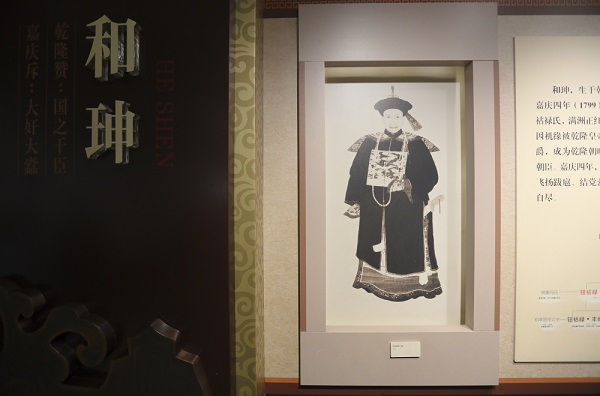
A portrait of Heshen hanging in the exhibition gallery
Yixin - Prince Kung
The First Person in the Qing Imperial Family with a Global Perspective
Yixin (1833-98), Prince Kung, was from the Aisin Gioro clan (the Qing imperial clan). He was the sixth son of Emperor Daoguang and younger brother of Emperor Xianfeng (r.1851-61).
Yixin was a political heavyweight during the late Qing Dynasty, and the leading figure of China’s Westernization Movement, a reform by and for the Qing rulers to maintain their rule between the 1860s and the 1890s. Throughout his life, he experienced the reigns of Daoguang (1821-50), Xianfeng, Tongzhi (1862-74), and Guangxu (1875-1908). Although he was removed from his office several times to undercut his influence, he intermittently presided over political affairs for nearly 30 years, and participated in many major decision-makings of the Qing government.
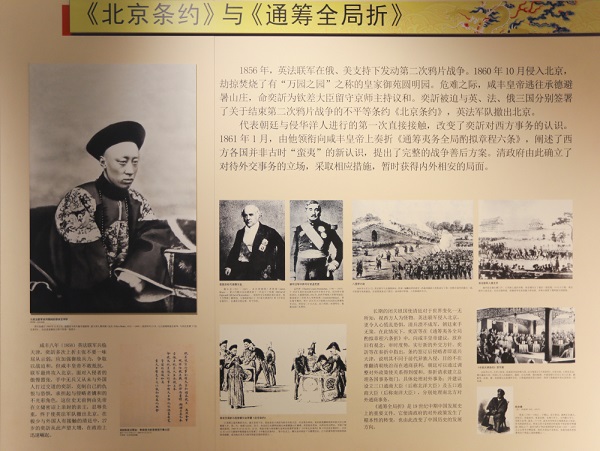
A signboard at the exhibition detailing the modernization movement proposed by Yixin, Prince Kung
Private Residence and Garden of the Imperial Family
Since the 1780s, this magnificent and exquisite architectural complex has been home to different nobles until it was finally split in 1937, when its garden was sold to Fu Jen University.
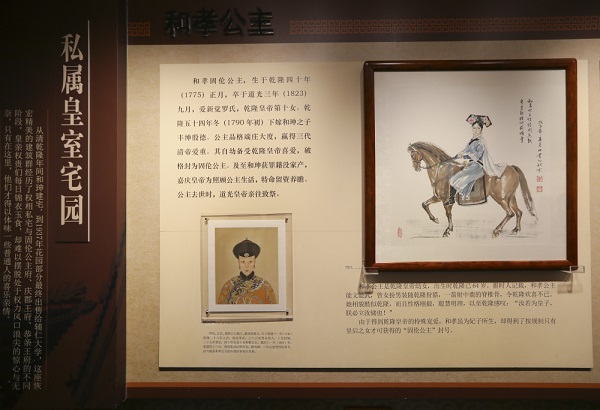
A signboard illustrating the first owner of Prince Kung’s Palace, Princess Hexiao, in the exhibition gallery
Public Cultural Space
After 1937, Prince Kung’s Palace was repurposed as the campus of Fu Jen University, marking the end of its era as a private royal residence and garden. During this period, Prince Kung’s Palace has been closely related to the development of modern Chinese culture, allowing it to be well preserved.
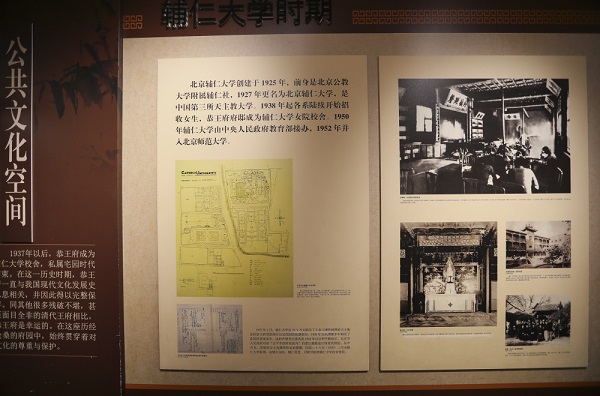
A signboard illustrating how the residence was converted into a public cultural space